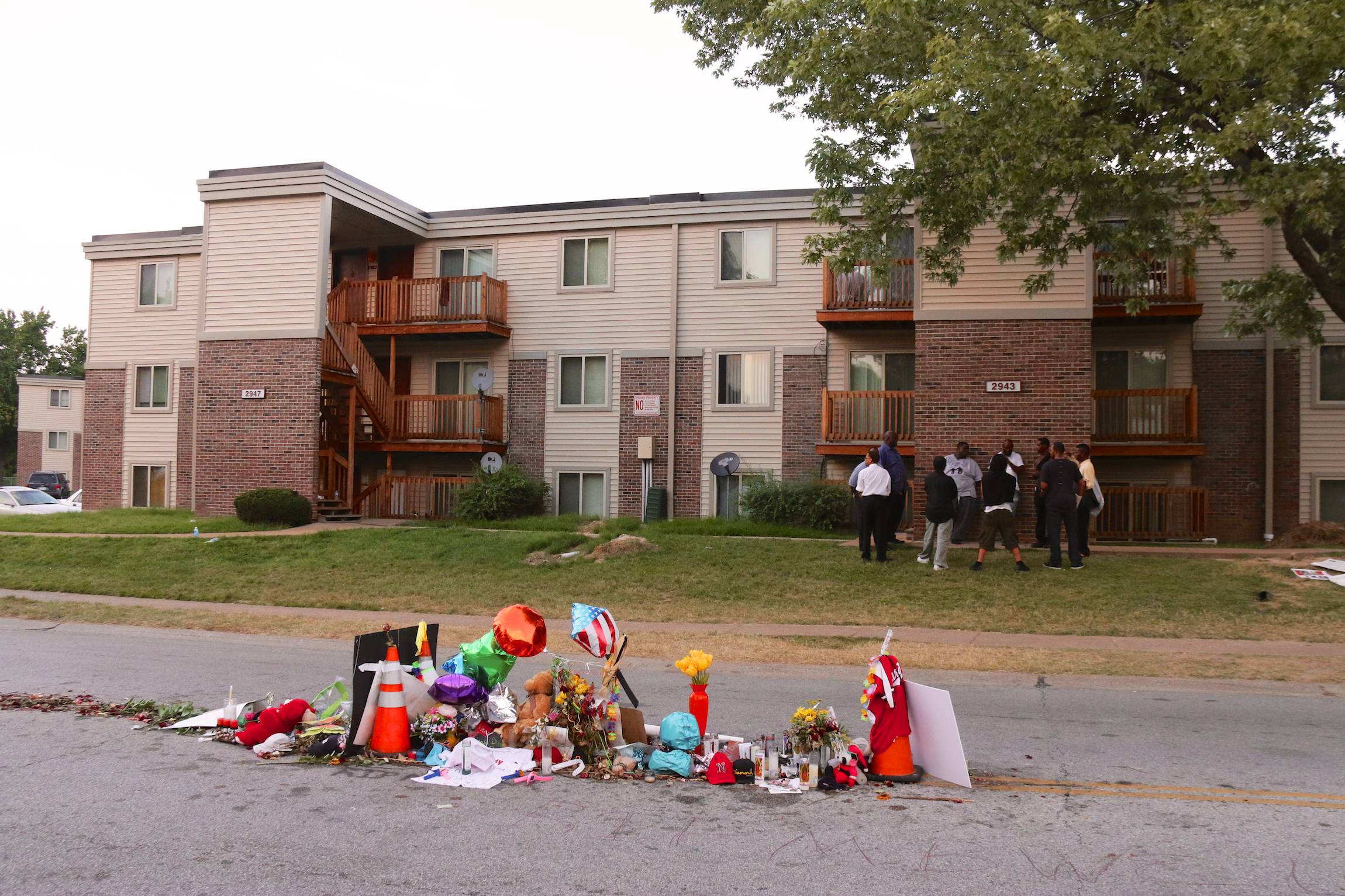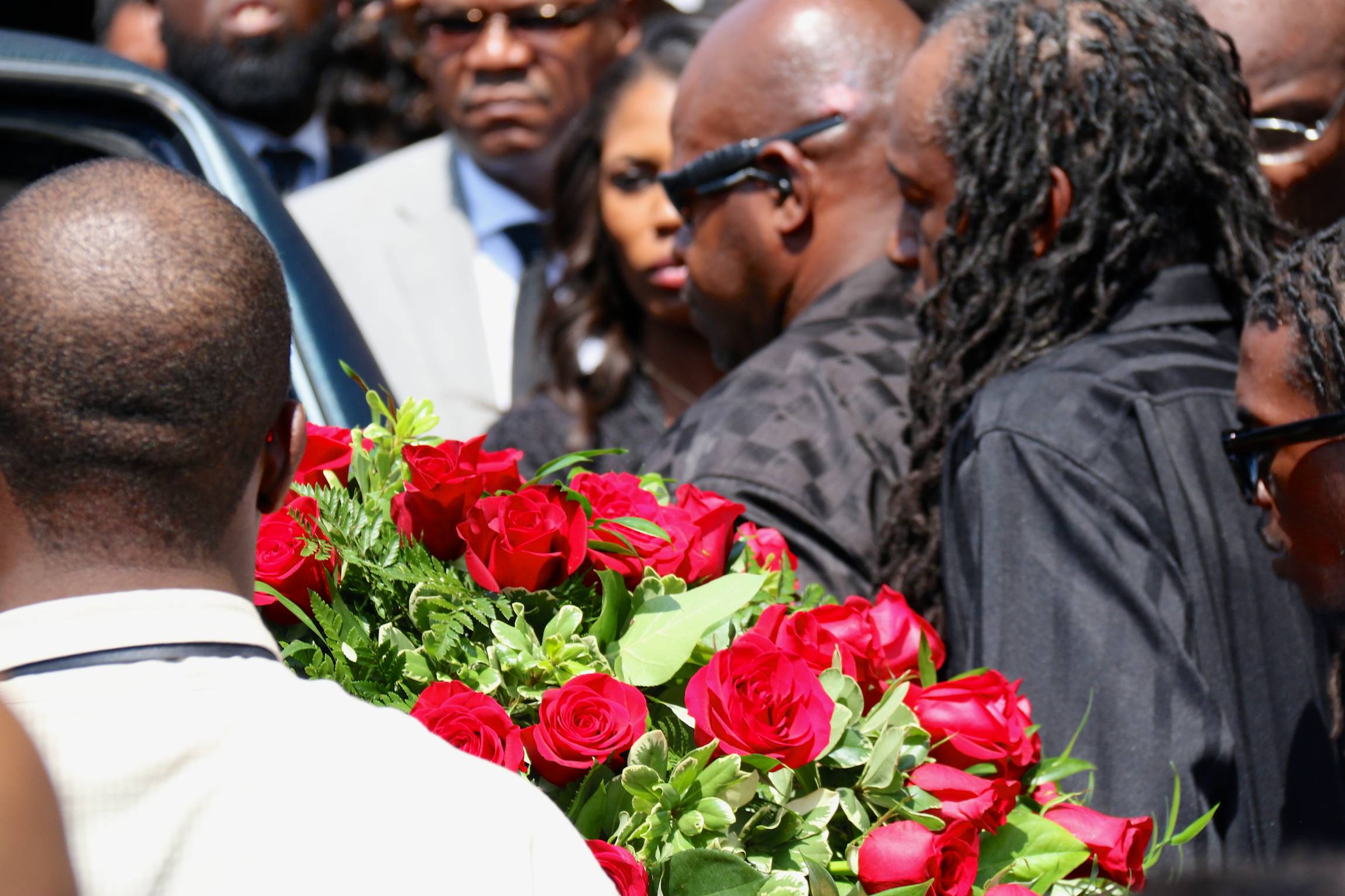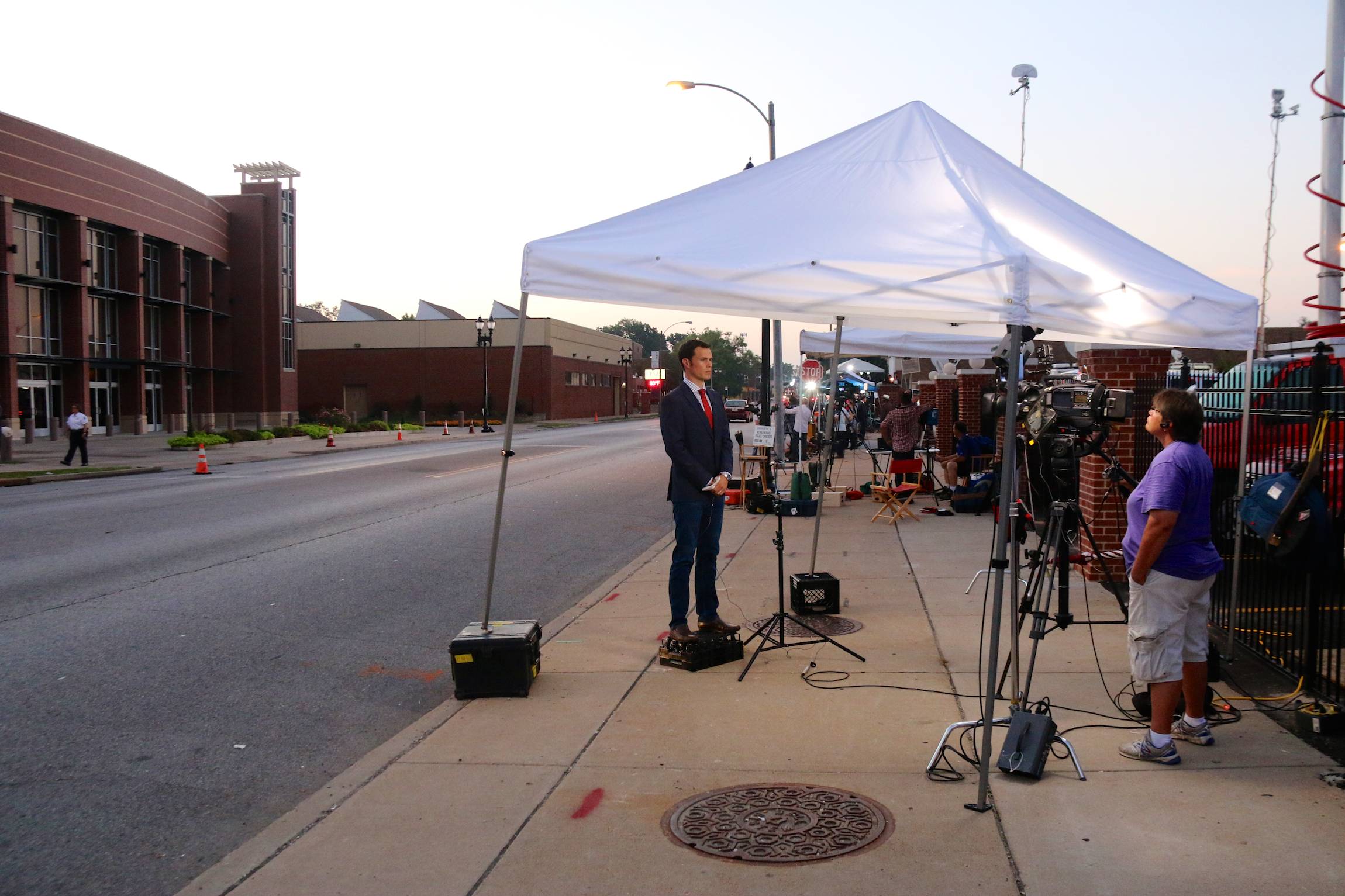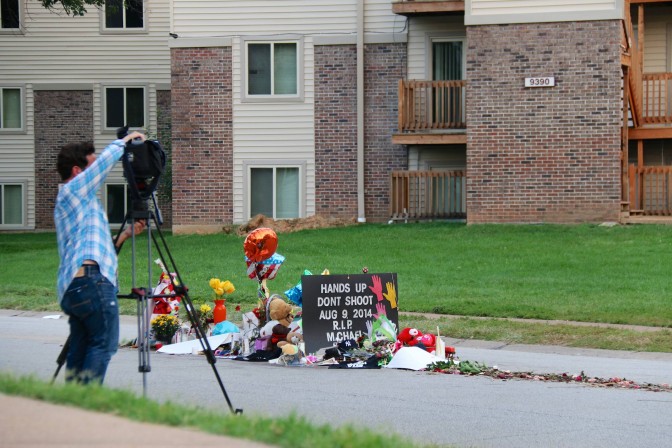I wrote the following text in early October for a class at The Ohio State University, before heading to cover the « #FergusonOctober » protests. I believe most of it has become relevant again as the decision of the Grand Jury was announced yesterday, Monday, November 24, 2014. What should be added, through, is that sensationalism and « riot porn » seems to have gotten worse. The nation and the world did not wait for the decision and the indictment, but counted down to more tear gas and burning cars. Those images are not what Ferguson deserves ; but it is what makes Ferguson stay on TV news for hours.
Monday, August 25, 2014, the day the funeral service for Michael Brown, a black teenager shot by officer Darren Wilson, was to be held in the Friendly Temple Baptist Church in St. Louis was set to become one of the hottest summer days in Missouri.
Across the street from the church, a massive amount of television trucks had set up the evening before ; some technicians were still wiring at 6:30 am. Correspondents had the first live standups. Smaller correspondents stood on beer crates to fit the frame.
The remaining events are history : a joyful ceremony celebrating life, aggressive speakers, and gospel music. What did not get through on television was the incredible heat outside. In the burning sun at midday, as journalists were melting in front of the church, waiting for the family to come out, Red Cross volunteers distributed water and fruit – a blessing at over 95°F (35°C).
There were no riots this day ; Michael Brown’s father had urged for peace. For many TV stations, which were covering Ferguson live 24/7 for the past weeks, it was the last day. Attention started to die down a few days earlier, when the riots ended. “Riots are the voice of the unheard,” Martin Luther King once said.

Near the spot where Michael Brown was shot, a small group of black young men had a vivid discussion. They leaned against the brown wall of 2943 Canfield Drive, where a memorial was set up in the middle of the street. As a white woman came to talk to them about their common destiny, they told her to leave. Only after she revealed that police had shot her with a rubber bullet during the protests, one of the men walked towards her and hugged her. “I respect you,” he said.
This is only one example of the mistrust that exists on both sides of the racial divide ; and this mistrust was there long before the shooting of Michael Brown.
The shooting of Michael Brown is not (only) an issue of a white policeman shooting an unarmed black teenager. The shooting of Michael Brown highlighted problems that were always there, but that nobody wanted to see. Yes, being black in America is not the same as being white – and this is not about institutional or legal discrimination. It is about daily life, about unequal access to education and to the job market.
Media tends to neglect that the issues raised in Ferguson go deeper than police brutality or police racism. But too few of us take the necessary time and try to understand why so many people still march every night in the St. Louis suburb weeks after the funeral. When the press wrote about the shooting of Michael Brown and the following riots, it missed the human part of the story. It missed how deeply this event touched every single black man, every single black woman.

While journalists turned up in flack-jackets, with helmets, armed with their cameras to capture the even better picture, they missed the story. While reporters went live to report the very latest developments featuring aggressive rioters and brutal police, while experts discussed racism and police brutality in America, they missed the point. While all those things happened in Ferguson, and as America watched, transfixed to Twitter, Facebook, CNN, MSNCB, and ABC (all at the same time), America missed the story.
The real story lies within the people mourning a “brother” who died on the streets of Ferguson, Missouri, and who would probably not have been shot if he had been white. The real story is about daily discrimination and daily problems black men and women have to face and that white men and women simply do not have to cope with. Understanding why people still march every day is key to getting the story right – and I will go back to Ferguson to try to understand this.
Unfortunately, we journalists do normally not have enough time to get the bigger picture anymore. Budget constraints, real-time Internet, and changing audiences ask for immediate, shocking content. We deploy so many journalists to tell “human stories” all over the world – why don’t we invest in some more journalists to tell the human story of the unheard, right here, back in America ? It might hurt, but it is very much necessary.

Title-photo caption: A reporter sets up a camera near the memorial for Michael Brown, Monday, August 25, 2014, in Ferguson, Mo. The death of the black teenager, who was shot by officer Darren Wilson, triggered days of violent protests in the St. Louis suburb. (Yann Schreiber, File)
